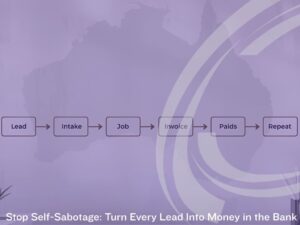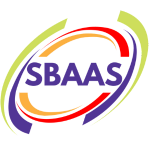Silent Profit Killers
Small businesses rely on communication, but when channels become disorganised, duplicated or ungoverned, the result isn’t just inefficiency. It’s erosion: of profit, productivity, accountability, and reputation.
It adds up fast, from WhatsApp group chats to half-forgotten email threads, Slack notifications, direct messages, shared inboxes, customer calls and personal texts. The average Australian business now operates across at least five digital channels every day. But without clear rules, workflows or ownership, communication becomes chaos.
In this article, we unpack the hidden business costs of unmanaged communication channels, explain why the problem escalates faster than you think, and explain what SMEs can do to build clarity, structure, and performance in their communication.
Because managing your communication isn’t about more tools, it’s about better systems.
Communication Chaos: The Reality for Many SMEs
Australian businesses today face increasing pressure to respond quickly, work remotely, and engage customers across multiple platforms. The tools are plentiful. The strategy, less so.
Here’s what unmanaged communication looks like:
- Email inboxes overflowing with customer enquiries that no one has assigned
- Slack channels with no naming conventions and unclear expectations
- Group chats on mobile phones, mixing personal and professional discussions
- Messages being forwarded (and lost) between multiple team members
- Clients emailing staff directly, bypassing agreed support pathways
- Multiple project updates shared across email, chat and task tools, none complete
It’s familiar, it’s frustrating, and it’s costly.
The Hidden Business Costs of Unmanaged Communication Channels
These costs aren’t always visible on a balance sheet but appear in other ways. Let’s explore where businesses lose value.
Lost Productivity
When staff spend their time:
- Checking five platforms for updates
- Re-reading the same messages across tools
- Following up with colleagues for missing context
That’s not productive work. That’s digital admin.
On average, a team member can lose 1.5 – 2 hours daily to inefficient communication. Across a five-person team, that’s over 2,000 hours per year, conservatively a $100,000+ productivity leak.
That is one of the hidden business costs of unmanaged communication channels: effort, constantly wasted in pursuit of clarity.
Decision Fatigue
Each platform comes with its own cues, norms, and urgency signals.
- Do I reply to this email?
- Acknowledge the message on Slack?
- Drop what I’m doing for this Teams notification?
Over time, this cognitive overload creates decision fatigue, reducing the quality of decisions made across the business.
This leads to:
- Slower strategic thinking
- Shorter tempers
- Avoidance of action
When communication isn’t systemised, it drains focus and decision-making capacity.
Poor Customer Experience
Missed enquiries. Delayed responses. Inconsistent messages. No handover when someone’s away.
Customers don’t care about your internal systems. They care about response time and resolution.
Unmanaged channels mean:
- A query emailed to info@ goes unmonitored for days
- A sales lead is DM’d on social and lost before it reaches the CRM
- Support requests bounce between staff who each assume “someone else” is handling it
The result? Frustration. Churn. Lost sales.
These are measurable outcomes of the hidden business costs of unmanaged communication channels.
Staff Burnout and Conflict
Incoherent communication doesn’t just confuse; it creates tension.
- Team members feel like they’re always on-call
- Important updates are missed, leading to blame
- Conversations lack traceability, causing disputes
When communication systems are unclear, relationships suffer. That drives disengagement, staff turnover and cultural decay.
Data Fragmentation and Compliance Risk
When vital information is shared across:
- Personal WhatsApp accounts
- Unsecured SMS messages
- Unarchived video calls
It creates a massive risk.
- You lose access when staff leave
- You fail to meet legal or data storage obligations
- You miss audit trails needed for compliance
These are not just inconveniences. These are liabilities and key reasons why the hidden business costs of unmanaged communication channels need urgent attention.
Common Communication Missteps in Small Businesses
Let’s explore where things tend to break down.
Over-Reliance on Email
Email is essential, but not for:
- Internal collaboration
- Task management
- Instant updates
Using it for everything slows response time and buries vital context in long threads.
Letting Tools Multiply Without Governance
You start with email. Then add Slack. Then someone creates a WhatsApp group. Then marketing brings in Monday.com. Then someone suggests Teams.
Now you’ve got five tools, zero structure, and lots of wasted motion.
No Defined Communication Protocols
If your team doesn’t know:
- What to send where
- When to use what tool
- Who owns each communication type
You don’t have a system. You have habits, and those are rarely strategic.
Unstructured Client Communication
If clients message you on personal platforms or contact different team members directly, you’re opening the door to:
- Mixed messaging
- Missed billing
- Duplicated effort
It’s informal, but not professional.
The Cost of Doing Nothing
Ignoring the problem leads to:
- Client churn due to poor service
- Unbillable hours spent chasing internal clarification
- Staff burnout due to constant interruptions
- Slowed growth as clarity vanishes
This is why the hidden business costs of unmanaged communication channels are so serious: they don’t just create admin—they destroy momentum.
A Framework for Managing Communication in Modern SMEs
SBAAS recommends a five-step framework to help Australian businesses bring structure, clarity, and strategy to communication.
Audit: What Tools Are in Use?
List every channel currently used for:
- Internal messaging
- External emails
- Customer service
- File sharing
- Team announcements
- Notifications
Map who uses what and for what purpose.
You’ll likely find:
- Redundancies
- Legacy tools no one owns
- Shadow communication happening off-platform
That’s your starting point.
Categorise by Purpose
Define what each communication type is used for:
- Email: External communication, formal notices
- Chat tool (e.g. Slack/Teams): Internal quick comms, check-ins, file links
- Project management platform (e.g. ClickUp/Asana): Task discussions, deadlines, accountability
- CRM or ticketing platform: Customer queries, case updates
This gives each channel a role, reducing crossover and confusion.
Establish Communication Protocols
Define simple, clear rules for your team:
- What belongs in email vs chat
- How quickly different channels should be checked/responded to
- When to escalate to a call or meeting
- What communication requires documentation
Write these into your operations manual or staff onboarding.
Create Shared Ownership
Appoint channel owners:
- Who owns each shared inbox?
- Who maintains folders, templates, and auto-responses?
- Who reviews client feedback across channels?
Shared ownership reduces the “not my job” effect and builds accountability into the system.
Review and Refine Monthly
Communication systems aren’t set-and-forget. Review:
- What’s working?
- Are we replying fast enough?
- Are customers happy?
- Are staff overwhelmed?
Adjust tools, rules and roles as needed.
Case Study: From Overwhelm to Operational Clarity
An SBAAS client, a boutique services firm, was using email, WhatsApp, Slack, and a CRM. Staff were doubling up on replies. Customers were frustrated.
We helped them:
- Consolidate all client communication into a CRM with tracked tickets
- Move internal messaging to Slack with naming conventions and ownership
- Set a 24-hour response SLA with clear escalation
Within 60 days, they reduced internal emails, and customer satisfaction jumped.
That’s the measurable impact of addressing the hidden business costs of unmanaged communication channels.
Integrating Communication Management into SBAAS Support
At SBAAS, we don’t just advise, we implement.
Our Actually Supported clients receive:
- Communication audits
- Role-based tool recommendations
- Template creation and auto-response libraries
- Staff onboarding material for communication protocols
- Ongoing review during monthly coaching sessions
Because when communication works, everything else works better.
Clarity Is a Competitive Advantage
Every business relies on communication. But not every business manages it well.
If you’re losing time, leads, or control, it’s time to take action.
Understanding the hidden business costs of unmanaged communication channels is step one. Building a framework for clarity, ownership, and efficiency is step two.
Because clarity isn’t a luxury, it’s your leverage.
Ready to Untangle Your Communication Chaos?
SBAAS helps Australian small businesses transform reactive communication into structured, strategic systems that support growth.
Book a consultation today or learn more about SBAAS to regain control of your communication – and protect the value of your time, team and trust.

Eric Allgood is the Managing Director of SBAAS and brings over two decades of experience in corporate guidance, with a focus on governance and risk, crisis management, industrial relations, and sustainability.
He founded SBAAS in 2019 to extend his corporate strategies to small businesses, quickly becoming a vital support. His background in IR, governance and risk management, combined with his crisis management skills, has enabled businesses to navigate challenges effectively.
Eric’s commitment to sustainability shapes his approach to fostering inclusive and ethical practices within organisations. His strategic acumen and dedication to sustainable growth have positioned SBAAS as a leader in supporting small businesses through integrity and resilience.
Qualifications:
- Master of Business Law
- MBA (USA)
- Graduate Certificate of Business Administration
- Graduate Certificate of Training and Development
- Diploma of Psychology (University of Warwickshire)
- Bachelor of Applied Management
Memberships:
- Small Business Association of Australia –
International Think Tank Member and Sponsor - Australian Institute of Company Directors – MAICD
- Institute of Community Directors Australia – ICDA
- Australian Human Resource Institute – CAHRI
Our Consulting Services

Management Consulting
Compliance & Risk

Professional Writing Services
Consistency in Communication

Small Business Consulting
Sustainable Businesses

Start-ups
Set-up for Success
Further reading

Pragmatism Wins: How Australian Businesses Turn AI Hype Into Real Results
Australian organisations are moving beyond experiments. This article shows how Australian businesses across all sectors and sizes can scale value, manage risk, and boost productivity with pragmatic AI.

Stop Self-Sabotage: Turn Every Lead Into Money in the Bank
Winning work is hard. Losing time and cash to clunky admin is optional. This guide shows how to design an automated business process that captures leads, books jobs, issues invoices with timely reminders, and keeps clients returning. Plain English, practical steps, and a sharp focus on simplification, speed, and cash flow.

Seeing the Wrong Picture: What Most Business Owners Miss When Reviewing Their Performance
Business owners aren’t short on data, but many are missing what matters most. Discover what most business owners miss when reviewing their performance and how to shift from surface-level tracking to strategic insight.

Navigating Economic Uncertainty: A Roadmap for Australian Small Businesses
Discover how global economic shifts and local consumer sentiment are reshaping Australian small businesses. Equip yourself with actionable insights and strategies to thrive amidst uncertainty.

The Hidden Cost of Success: How Leadership Burnout is Crippling Australia’s Small Business Sector
Leadership burnout is rising fast across Australia’s small business sector. This article unpacks what it looks like, what causes it, and how SME leaders can protect themselves and their teams before the damage becomes irreversible.

From Centre to the Edges: A Practical Guide to the Political Left to Right Scale for Australian Business
We hear “far left” and “far right” every day. This guide starts in the middle, explains each step to the edges, and shows what the political left-to-right scale means for Australian enterprises of all sizes.
SBAAS Events
What our clients are saying about us
Posted onTrustindex verifies that the original source of the review is Google. Eric and Trudi recently wrote a tender for me and the experience was amazing. I went into the process in a state of complete overwhelm. Eric was able to break it down into achievable chunks for me, and reassure me that I had a great service and business model to offer. I came out the other end of the process with all of my business policies, a better understanding of my offer, and a foundation to launch all future tender applications. Eric took all of my information and turned it into a pretty package that I could market.Posted onTrustindex verifies that the original source of the review is Google. SBAAS were fantastic to work with on a detail-heavy tender with a tight turnaround. Their team helped us shape and compile our content to deliver a strong, high-quality submission. Highly recommend SBAAS to anyone looking for strategic support with tender development, with a touch of good humour along the way.Posted onTrustindex verifies that the original source of the review is Google. We engaged SBAAS to support the development of a complex government tender and couldn’t be happier with the outcome. SBAAS' professionalism, attention to detail, and ability to quickly understand our business and translate that into a compelling, well-structured submission were exceptional. They were responsive, collaborative, and a genuine extension of our team. Highly recommend for anyone looking for strategic, high-quality bid and tender writing support.Posted onTrustindex verifies that the original source of the review is Google. Eric and Team go above and beyond. They do an excellent job with researching to get everything that is legally required for Policies and QMS. Would recommend them them to everyone especially all the bookkeepers and accountants. Thank you guys, and extreme job. Love you work as always. 😀Posted onTrustindex verifies that the original source of the review is Google. Extremely professional and far exceeded by expectations. I will definitely be using their services again and highly recommend them. They have a spirit of excellence in everything they do which shines through when dealing with them.Posted onTrustindex verifies that the original source of the review is Google. Impressive consulting experience! The team is highly professional, with a hands-on approach that adds real value. Their dedication and expertise truly stand out. Highly recommended!Posted onTrustindex verifies that the original source of the review is Google. Super knowledgable company that provides great advice and support for small business. Super friendly, highly recommend.Posted onTrustindex verifies that the original source of the review is Google. As a new business owner, I recognised the value in seeking a business coach to help me achieve significant goals. After a disappointing experience with a previous coach, I was initially hesitant to try again. However, after seeing SBAAS's complimentary action plan, I thought there was no harm in investigating. Eric quickly identified gaps in my systems, and through a few targeted adjustments, I saw an immediate increase in both leads and sales. These changes also improved profitability—highlighting a major issue I hadn’t been aware of, as my previous coach’s guidance had me working for less than $7 per hour! I look forward to continuing working with Eric.
